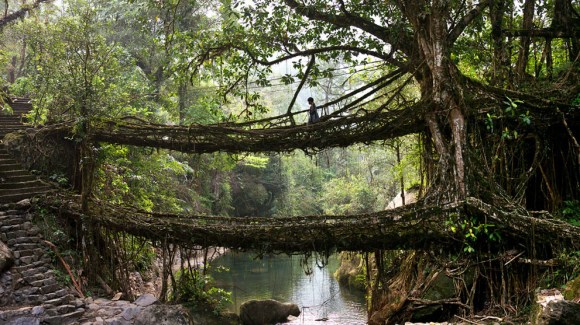
Now that we’re well into the sweltering, cicada-droning final days of summer in Japan, can you even remember what it felt like during the rainy season earlier this summer? If you complained nonstop about having to leave the house day after day with an umbrella in tow at the time, you may actually be thankful for those comparatively ‘dry’ rainy days after seeing these pictures from the rainiest place on Earth.
While the location of the highest average annual rainfall in the world can be debated based on the source and conflicting data sets, for the purposes of this article we’ll be saying that the honor of that title goes to a pair of villages in northeastern India. In case you’re curious, the two towns of Lloró and Lopez del Micay in Colombia and Mount Waialeale in Hawaii, USA, have also made recent claims to the title.
The two villages are located north of Bangladesh in the northeastern Indian state of Meghalaya (which means “the abode of clouds” in Sanskrit). The village of Mawsynram receives an annual rainfall of 11,872 mm/467.4 inches (that’s 13 times the amount in Seattle!), and is currently considered to be the rainiest place on Earth. 16 km (9.9 mi) to the west of Mawsynran is the second village of Cherrapunji, also known as Sohra. Cherrapunji remains the world record holder for highest rainfall in a single month (9,300 mm/366 inches in July 1861) and in a calendar year (26,461 mm/1,041.75 inches between August 1960 and July 1961).
Both of the villages are part of the Khasi Hills area of Meghalaya, which is a subtropical highland climate home to roughly 1.25 million indigenous Khasi people, a matrilineal culture.
▼Location of the state of Meghalaya in India
Almost all of the rainfall in the area occurs during the monsoon months, when winds blowing from the Bay of Bengal concentrate the rains over the Khasi Hills and valley area. But try to wrap your mind around this–despite being possibly the wettest place on Earth, drought is actually a significant problem in Meghalaya during the non-monsoon months due to rampant deforestation and heavy rains washing away topsoil. Scientists would be wise to increase conservation efforts because the surrounding forests boast some of the greatest biodiverity in all of Asia, including almost 325 varieties of orchids and nine critically endangered species of birds.
We were initially attracted to Meghalaya after stumbling across some stunning photographs taken by New Zealand journalist and photographer Amos Chapple in this article run by The Atlantic. Maybe someday we can send one of our own reporters there to check out the living tree bridges, but until then we’ll make do with the following exquisite pictures, which still don’t manage to do the area justice.
▼Mawsynram
▼A new digital measurement system will be implemented by the end of this year at this weather station.
▼Villagers wear these bamboo and banana leaf full-body umbrellas, called knups, as they go about their daily work.
▼26-year-old Winchester Lyngkhoi carries fresh meat up to his stall on market day. When asked if it’s hard to live in such a rainy place, he replied, “We can’t think about that. Here there’s always rain but we have to work, so it’s no good wondering.”
▼Approximately 70 percent of the Khasi people are Christian, as a result of a Welsh missionary in the mid-1840s.
▼Goats at a bus stop
Particularly famous in the region are the previously-mentioned living tree bridges, which last for hundreds of years whereas regular wooden structures would soon rot in the damp environment. Villagers guide the roots of rubber trees to grow in a specific pattern so that they develop into sturdy structures capable of being walked across.
▼Close-ups showing how the locals manipulate tree roots into growing into bridges.
▼An example of a living bridge being ‘grown’ using a support of bamboo.
▼Living ladders also exist
It’s absolutely stunning. There are no words to describe the natural beauty of this place.
Sources: The Atlantic, Unusual Places, Wikipedia, Weather
Images: Amos Chapple (Facebook), Wikipedia (Planemad)

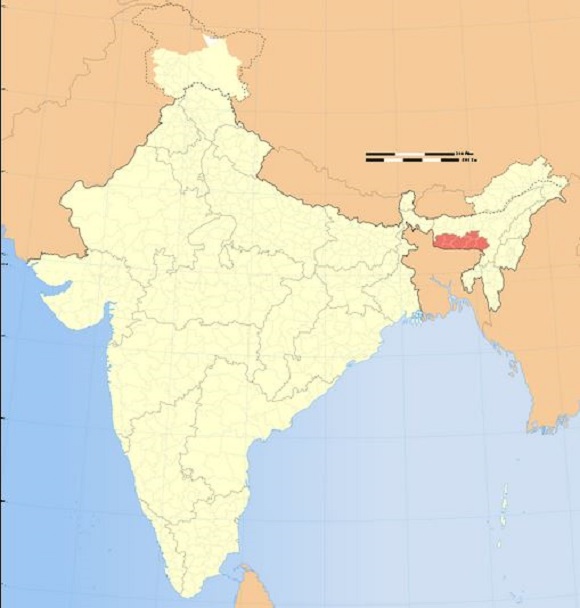
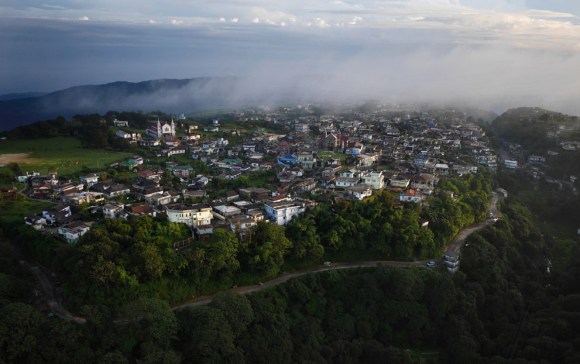
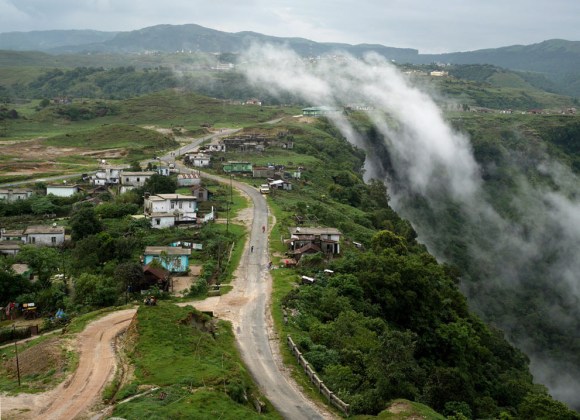
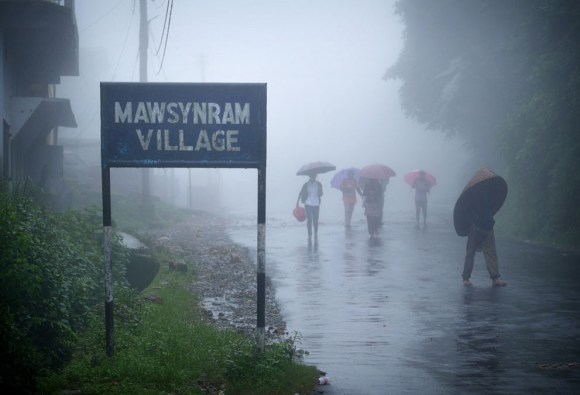
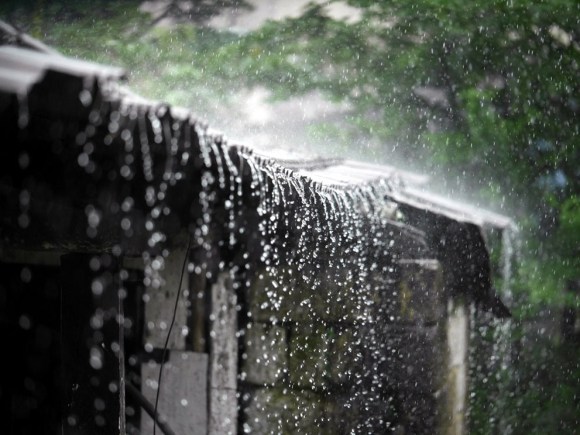
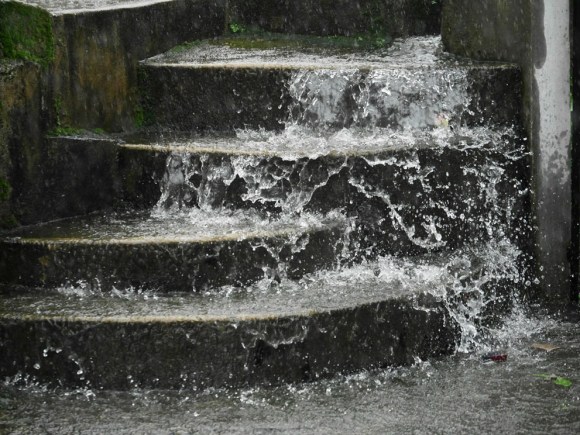

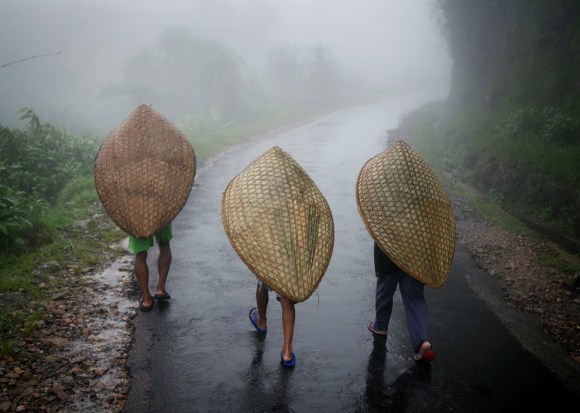
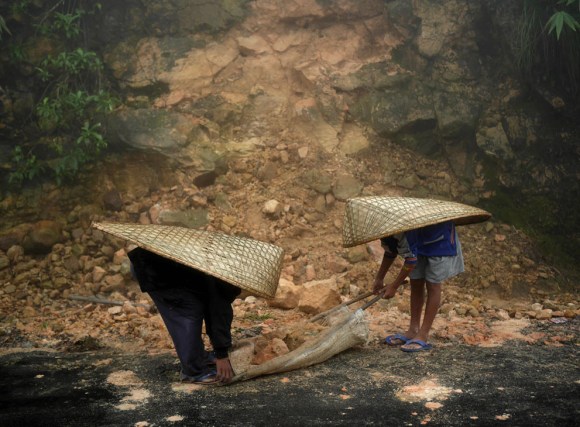
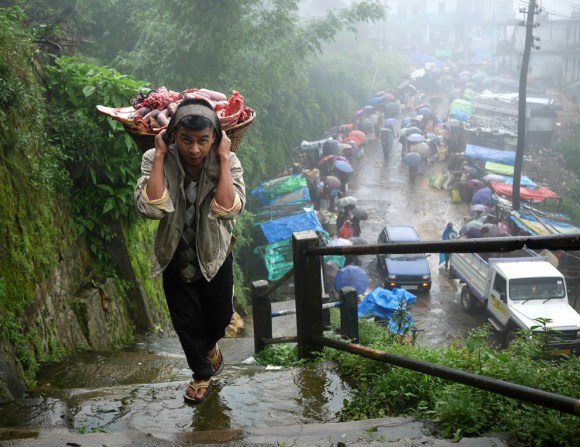
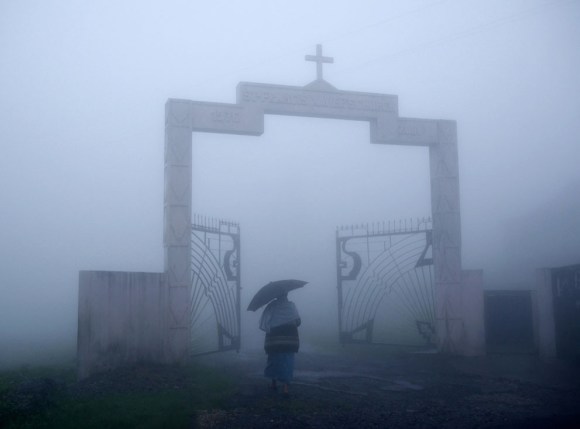

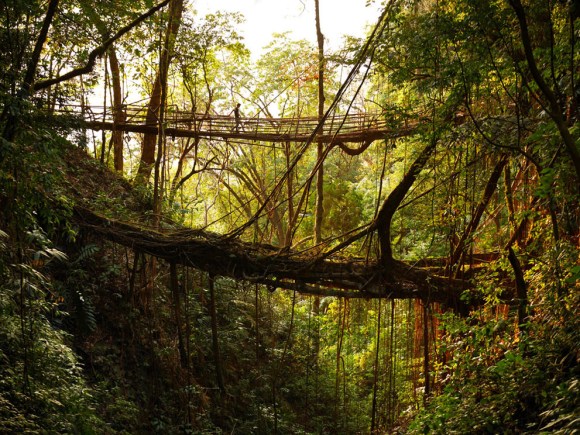
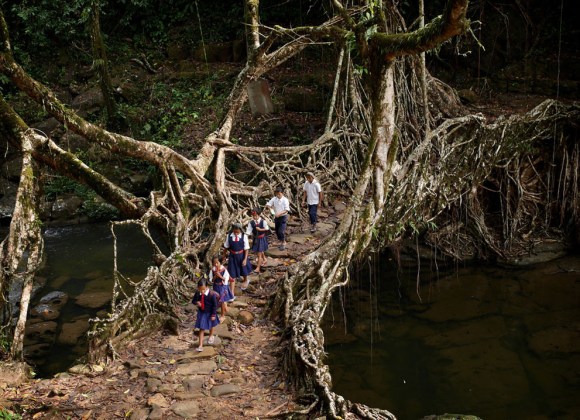
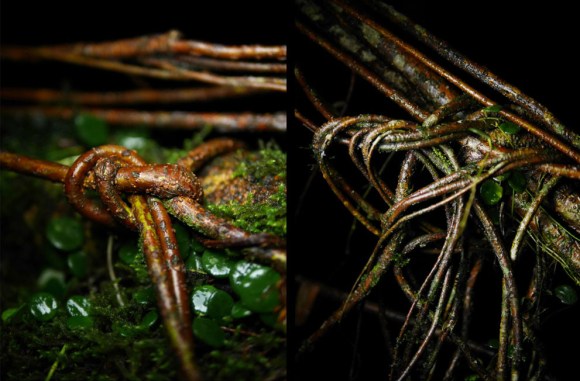

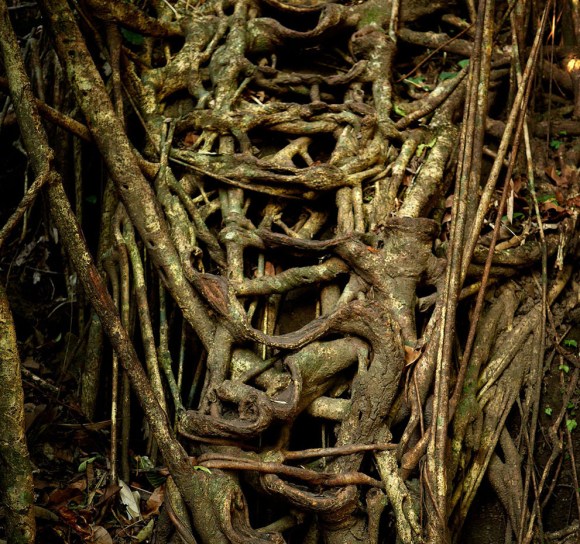
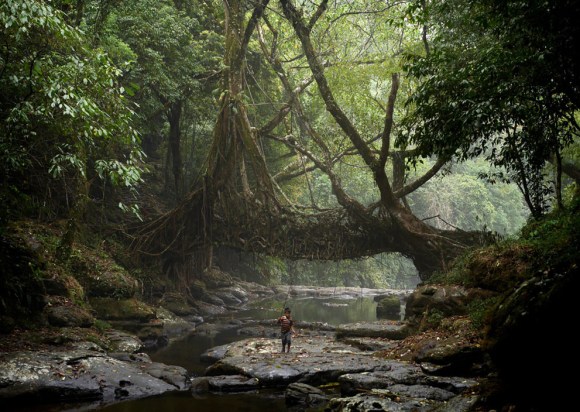
 Mayoterrace to open this month, may well be the tangiest place on Earth
Mayoterrace to open this month, may well be the tangiest place on Earth 16 facts about India that will blow your mind
16 facts about India that will blow your mind “Buddhists’ Disneyland” the Pure Land Cave is the trippiest place on earth
“Buddhists’ Disneyland” the Pure Land Cave is the trippiest place on earth Don’t let the rain get you down! Here are Japan’s top 10 most beautiful rainy day travel spots
Don’t let the rain get you down! Here are Japan’s top 10 most beautiful rainy day travel spots Sacred 1,200-year-old tree toppled by severe storm at shrine in central Japan【Photos】
Sacred 1,200-year-old tree toppled by severe storm at shrine in central Japan【Photos】 McDonald’s new Happy Meals offer up cute and practical Sanrio lifestyle goods
McDonald’s new Happy Meals offer up cute and practical Sanrio lifestyle goods All-you-can-drink Starbucks and amazing views part of Tokyo’s new 170 meter-high sky lounge
All-you-can-drink Starbucks and amazing views part of Tokyo’s new 170 meter-high sky lounge Studio Ghibli glasses cases let anime characters keep an eye on your spectacles
Studio Ghibli glasses cases let anime characters keep an eye on your spectacles McDonald’s Japan releases a pancake pie for new retro kissaten coffeeshop series
McDonald’s Japan releases a pancake pie for new retro kissaten coffeeshop series The oldest tunnel in Japan is believed to be haunted, and strange things happen when we go there
The oldest tunnel in Japan is believed to be haunted, and strange things happen when we go there Awareness campaign warns foreigners in Japan of “Divorce without Consent”
Awareness campaign warns foreigners in Japan of “Divorce without Consent” We try out “Chan Ramen”, an underground type of ramen popular in the ramen community
We try out “Chan Ramen”, an underground type of ramen popular in the ramen community Starbucks reopens at Shibuya Scramble Crossing with new look and design concept
Starbucks reopens at Shibuya Scramble Crossing with new look and design concept More foreign tourists than ever before in history visited Japan last month
More foreign tourists than ever before in history visited Japan last month Super Nintendo World expansion gets delayed for several months at Universal Studios Japan
Super Nintendo World expansion gets delayed for several months at Universal Studios Japan Disney princesses get official manga makeovers for Manga Princess Cafe opening in Tokyo
Disney princesses get official manga makeovers for Manga Princess Cafe opening in Tokyo Beautiful new Final Fantasy T-shirt collection on the way from Uniqlo【Photos】
Beautiful new Final Fantasy T-shirt collection on the way from Uniqlo【Photos】 Is the new Shinkansen Train Desk ticket worth it?
Is the new Shinkansen Train Desk ticket worth it? Foreign English teachers in Japan pick their favorite Japanese-language phrases【Survey】
Foreign English teachers in Japan pick their favorite Japanese-language phrases【Survey】 Japanese convenience store packs a whole bento into an onigiri rice ball
Japanese convenience store packs a whole bento into an onigiri rice ball Studio Ghibli releases Kiki’s Delivery Service chocolate cake pouches in Japan
Studio Ghibli releases Kiki’s Delivery Service chocolate cake pouches in Japan Japan’s bone-breaking and record-breaking roller coaster is permanently shutting down
Japan’s bone-breaking and record-breaking roller coaster is permanently shutting down New definition of “Japanese whiskey” goes into effect to prevent fakes from fooling overseas buyers
New definition of “Japanese whiskey” goes into effect to prevent fakes from fooling overseas buyers Our Japanese reporter visits Costco in the U.S., finds super American and very Japanese things
Our Japanese reporter visits Costco in the U.S., finds super American and very Japanese things Studio Ghibli unveils Mother’s Day gift set that captures the love in My Neighbour Totoro
Studio Ghibli unveils Mother’s Day gift set that captures the love in My Neighbour Totoro Foreign passenger shoves conductor on one of the last full runs for Japan’s Thunderbird train
Foreign passenger shoves conductor on one of the last full runs for Japan’s Thunderbird train Domino’s Japan now sells…pizza ears?
Domino’s Japan now sells…pizza ears? New Japanese KitKat flavour stars Sanrio characters, including Hello Kitty
New Japanese KitKat flavour stars Sanrio characters, including Hello Kitty Kyoto creates new for-tourist buses to address overtourism with higher prices, faster rides
Kyoto creates new for-tourist buses to address overtourism with higher prices, faster rides Sales of Japan’s most convenient train ticket/shopping payment cards suspended indefinitely
Sales of Japan’s most convenient train ticket/shopping payment cards suspended indefinitely Sold-out Studio Ghibli desktop humidifiers are back so Totoro can help you through the dry season
Sold-out Studio Ghibli desktop humidifiers are back so Totoro can help you through the dry season Japanese government to make first change to romanization spelling rules since the 1950s
Japanese government to make first change to romanization spelling rules since the 1950s Ghibli founders Toshio Suzuki and Hayao Miyazaki contribute to Japanese whisky Totoro label design
Ghibli founders Toshio Suzuki and Hayao Miyazaki contribute to Japanese whisky Totoro label design Doraemon found buried at sea as scene from 1993 anime becomes real life【Photos】
Doraemon found buried at sea as scene from 1993 anime becomes real life【Photos】 Tokyo’s most famous Starbucks is closed
Tokyo’s most famous Starbucks is closed One Piece characters’ nationalities revealed, but fans have mixed opinions
One Piece characters’ nationalities revealed, but fans have mixed opinions We asked a Uniqlo employee what four things we should buy and their suggestions didn’t disappoint
We asked a Uniqlo employee what four things we should buy and their suggestions didn’t disappoint Princesses, fruits, and blacksmiths: Study reveals the 30 most unusual family names in Japan
Princesses, fruits, and blacksmiths: Study reveals the 30 most unusual family names in Japan Summer in Japan doesn’t feel like a Japanese summer this year, many are saying
Summer in Japan doesn’t feel like a Japanese summer this year, many are saying Japan’s magic umbrellas reveal cute patterns in the rain
Japan’s magic umbrellas reveal cute patterns in the rain Japanese smartphone attachment trims your nose hairs, makes you the saddest man on Earth
Japanese smartphone attachment trims your nose hairs, makes you the saddest man on Earth Doraemon replaces live cat for Thai rain ritual
Doraemon replaces live cat for Thai rain ritual Shibuya rats scuttle along streets in the wake of Typhoon Hagibis【Video】
Shibuya rats scuttle along streets in the wake of Typhoon Hagibis【Video】 There’s more to do than just look at the flowers at Tokyo’s biggest riverside sakura celebration
There’s more to do than just look at the flowers at Tokyo’s biggest riverside sakura celebration Cosplay in the rain with a Snow White raincoat from Japan
Cosplay in the rain with a Snow White raincoat from Japan Lightning storm photos of the Skytree show the Tokyo symbol in a whole new light【Photos】
Lightning storm photos of the Skytree show the Tokyo symbol in a whole new light【Photos】 Flood victims send SOS tweets on Twitter in wake of Typhoon Hagibis
Flood victims send SOS tweets on Twitter in wake of Typhoon Hagibis Is this Tokyo, or Final Fantasy? Rainy season night makes for incredible Skytree view【Photos】
Is this Tokyo, or Final Fantasy? Rainy season night makes for incredible Skytree view【Photos】 Ghibli theme park will have Totoro playroom, Kiki’s house, and let you work Irontown’s bellows
Ghibli theme park will have Totoro playroom, Kiki’s house, and let you work Irontown’s bellows Oregon as a Studio Ghibli film – Gorgeous tourism video shows the state as a Miyazaki wonderland
Oregon as a Studio Ghibli film – Gorgeous tourism video shows the state as a Miyazaki wonderland Japanese photographer captures the beauty of Tokyo Station in breathtaking image
Japanese photographer captures the beauty of Tokyo Station in breathtaking image Inside China’s Mission Hills Golf Club, the largest golf resort in the world
Inside China’s Mission Hills Golf Club, the largest golf resort in the world Sturgeons in Japanese village outnumber human population, used as marketing strategy
Sturgeons in Japanese village outnumber human population, used as marketing strategy
Leave a Reply